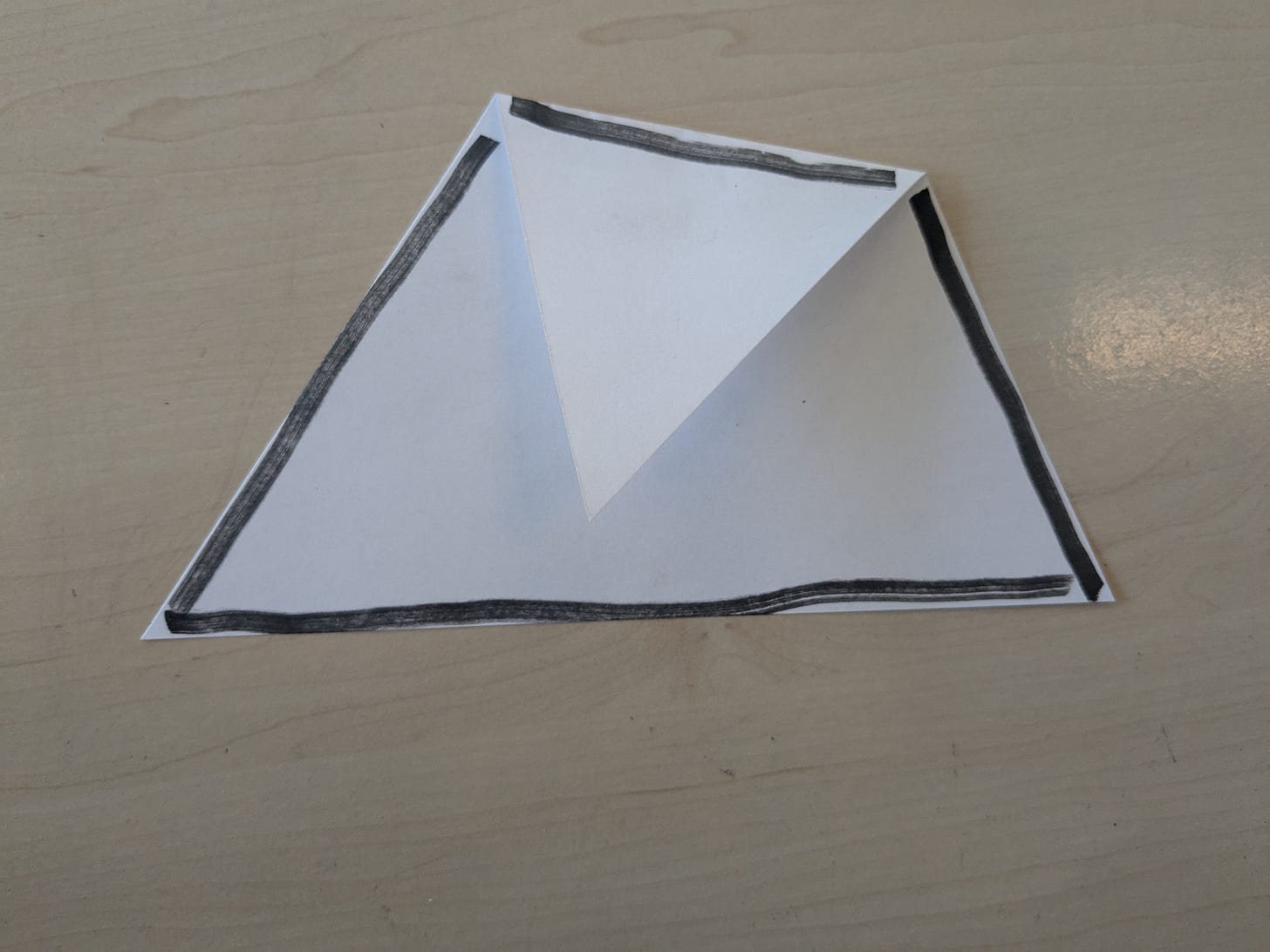A Fun Problem
You can do a lot with a piece of paper
If you’re into podcasts, I was on The Learning Stack podcast. You can listen here.
Here’s a fun problem, from Play With Your Math:
I enjoyed playing around with it, and I wanted to share it with my students. We’re just getting started with our geometry unit, so it seemed like a good time to do a problem about shapes.
The Goal
Exploration is an important aspect of mathematics. It’s a big part of what mathematicians do. I want my students to get a glimpse of what that looks like. I don’t do explorations every day or as part of how I regularly teach new content. When I do that, it tends to reinforce an existing hierarchy: students who feel like they’re good at math figure it out, students who don’t feel good at math don’t figure it out. Learning new content is connected to lots of prior knowledge, which puts some students at a clear advantage. When I do explorations, I try to pick problems that aren’t connected to the curriculum and don’t require too much background knowledge. This problem is a great example.
My goal for this problem is to give students a taste of mathematical exploration, and also for as many students as possible to feel successful in that exploration. Figuring things out is fun. I want my students to experience that.
The Problem
I found the framing of the problem above intriguing, but it’s not right for my students. When I do explorations I try to break problems down into small, manageable pieces. Instead of a rectangle, I started with a triangle. I folded it like this:
With one fold I made a four-sided shape. I added the outline to emphasize that “sides” only includes the edges of the shape; some students want to count the “interior” folds as sides as well. Here’s the first problem: how many sides can you make with a single fold?
I really like this problem because the answer isn’t obvious to 7th graders, but many 7th graders will figure out the maximum number of sides you can get for one fold of a triangle. It’s good to start an exploration with a bit of success. The other benefit of this problem is that it’s a good chance to make sure every student understands the prompt, understands what I mean by “one fold” and “sides.”
Then I bring the class together, some students share what they got, we name the shape, and we move on to the next problem. Using a triangle, how many sides can you make with two folds? This one is a lot harder!
After some exploration time and a share-out I called it for the day. It’s nice to break these things up over multiple days to keep engagement high. We moved on to some other tasks for the rest of the period.
The next class we jumped into the rectangular version. I began with the same prompt: I gave an example of one fold, and asked how many sides they could make with a single fold. We spent a few minutes playing around with that, students settled on a consensus, and then dove into two folds. Two folds is really hard! It was fun for a lot of students to get one number, then try to beat it. Each class was a bit different. We spent some time exploring, a few students shared their thinking, and then I wrapped up by talking a bit about how this connects to some big-picture themes of mathematical exploration.
Closing
It’s important to be humble with problems like this. I don’t pretend that I’ve magically taught students problem-solving skills through one problem. I haven’t radically changed their perception of math either. Students spent some time thinking about and playing with shapes. Many of them enjoyed it. Some felt proud of what they figured out. Some were pretty curious. Some students who often struggle in math class felt successful.
I haven’t figured out the right frequency for problems like this. Most of the time I’m a pretty no-nonsense teacher. I try not to waste time, and try to make the most of the learning time we have. But I see a lot of value in exploring like this every so often. While I’m not changing the world with a single lesson, I do think it can help students to see math—and their relationship with math—a bit differently.




Love it (the exploration problems, and how you chunk it into multiple stages), thanks for sharing!